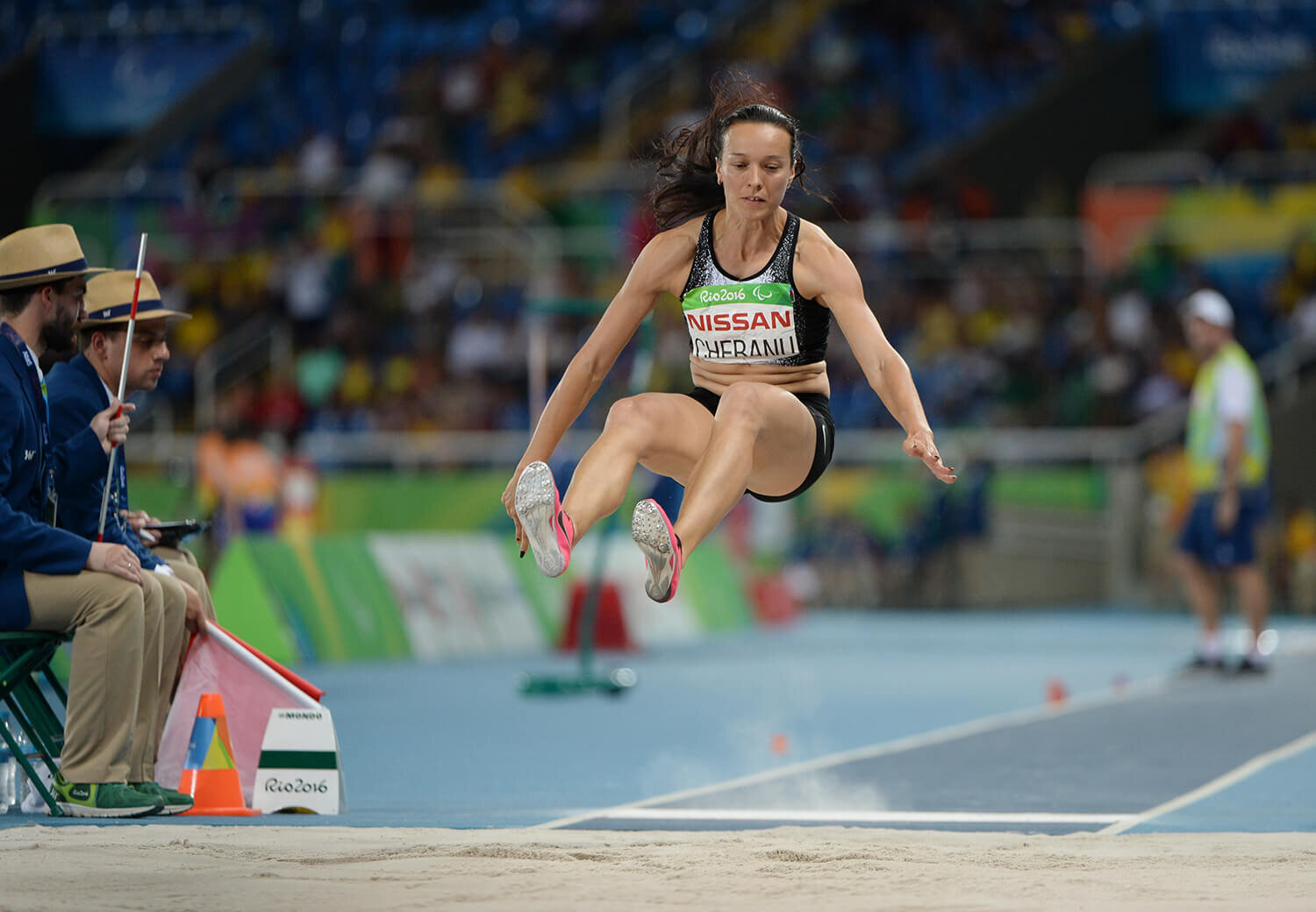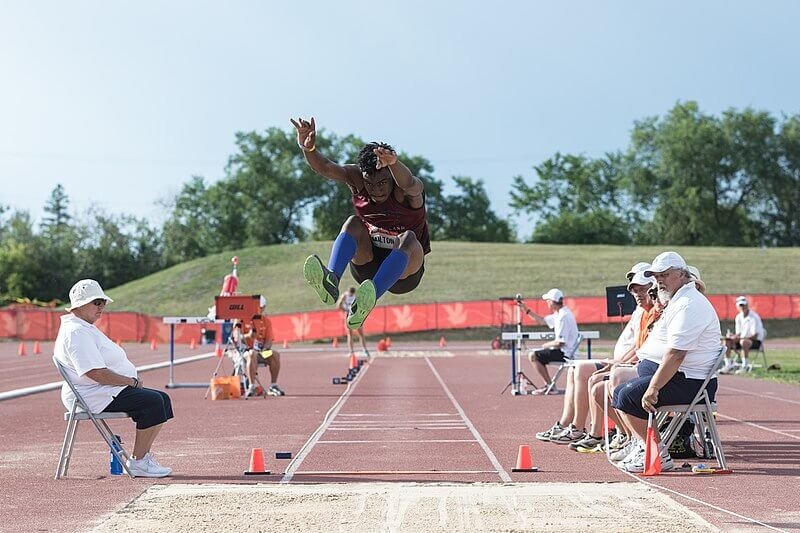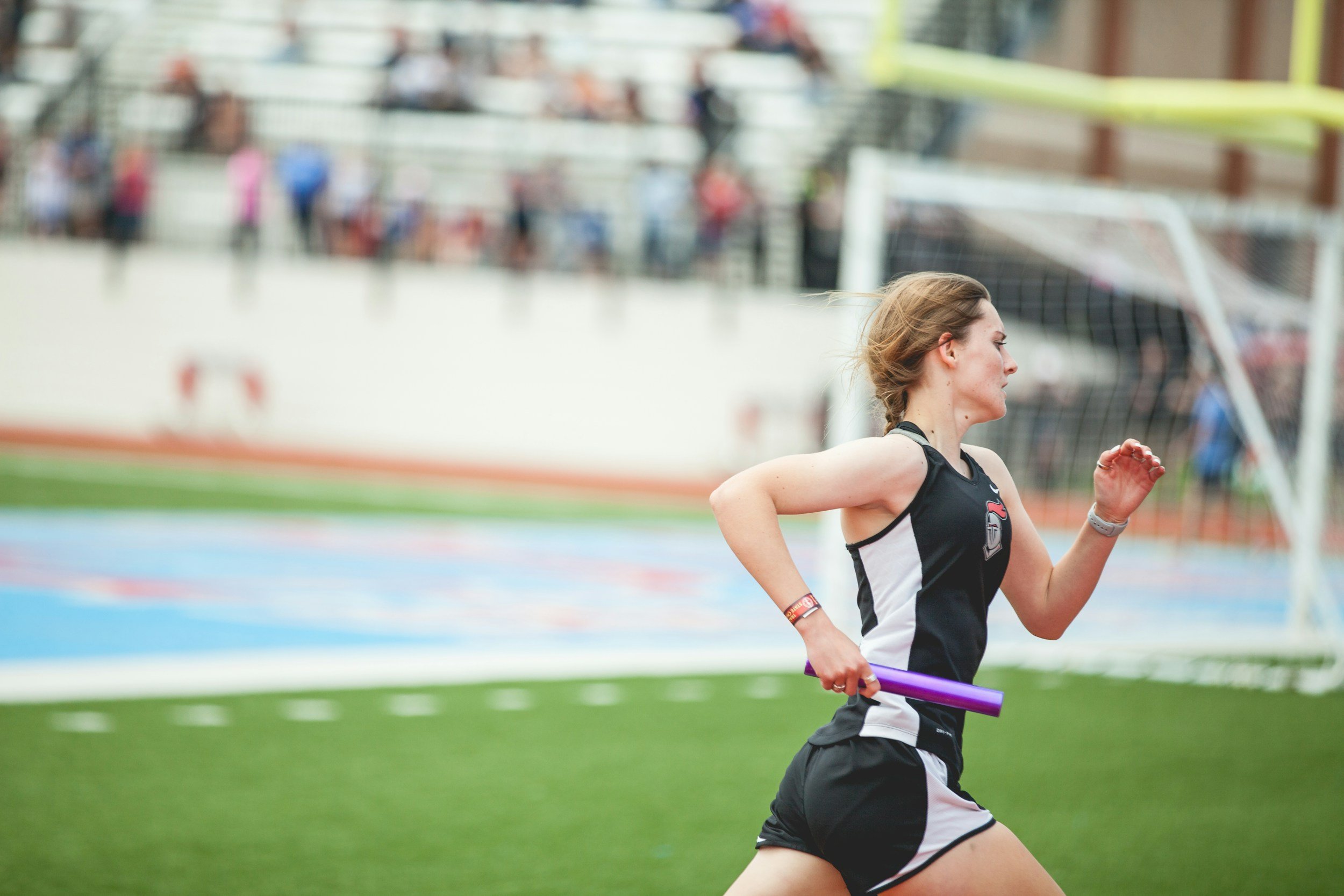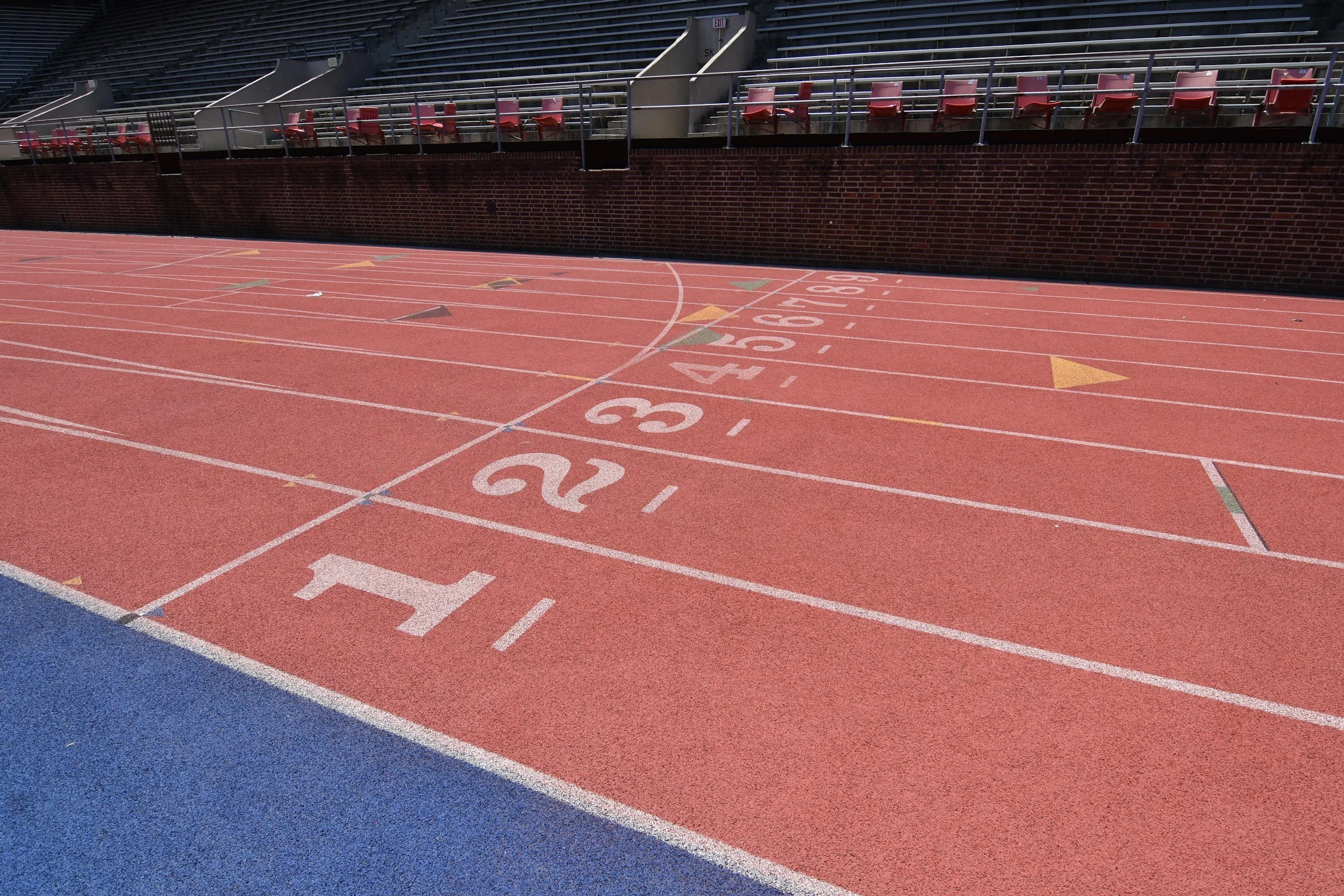How to Long Jump Like a Professional
To succeed in the long jump, an athlete must understand and practice the mechanics of how the long jump works.
There are 4 Important phases in the long jump.
Once an athlete understands each phase, they can spend time perfecting each stage to jump their farthest possible distance. Learning the different phases and their mechanics also helps athletes improve their confidence and training for the long jump.
Approach
Track is all about speed and power. The long jump is no different.
To jump far, a jumper must approach the board with a large amount of speed. The speed is used to gain momentum for the jump. The greater an athlete’s speed, as they approach the board, the more momentum they will have to launch themselves into the air.
A long jumper’s initial steps must be powerful and accelerate them. Over the length of their runway approach, the athlete builds up their speed and takes on proper, maximum speed sprinting form.
A long jumper does not need to be as fast as a 100-meter runner to jump far. However, they must be able to move very quickly down the runway. Long jumpers like Tianna Bartoletta use their world class sprinting speed to jump far.
Long jumpers must include sprint workouts in their training to develop the speed needed to jump far.
The approach run must also be carried out at a rhythm that the athlete is used to. This rhythm ensures that the approach can be repeated for multiple jumps.
Takeoff
As the jumper approaches the board, they prepare to take their last step before taking off (the penultimate step). The 3rd to last step and the penultimate step will have slightly lowered hips in order to lower the center of mass and translate runway speed into distance.
During the takeoff, the hips should be positioned approximately on top of the board. If they are too far forward, it will cause your body to reach and diminish your jump’s distance. If your hips are behind the board, you are not projecting your body forward.
In the take off your feet should touch the board in a rolling heel to toe motion. Do not jab your toes into the board to jump! This contributes to ankle injuries, and it reduces the amount of force you can push against the board.
Finally, the takeoff angle your jumping leg forms with the floor should be between 15 and 30 degrees. If your takeoff angle is 0 degrees (your jumping leg goes straight into the floor), you will jump straight up and not achieve much distance. Research has shown that having a takeoff angle between 15 and 30 degrees helps you project up and forward.
Flight
Once you jump off the board, you are in the air: the flight phase. To get the greatest distance for your jump, you want to stay in the air as long as possible and prepare the body for the landing.
There are 3 major flight techniques: the hang, the hitch kick, and the sail. Jumpers can experiment with different techniques. Ultimately, a jumper chooses the technique that best suits their build and preference.
Regardless of technique, the goal of the flight is to counter the rotation from take-off, so that the jumper moves forward to increase their distance.
At the peak height of the flight, the jumper should start to prepare for their landing. Move the hands moving forward and pull the feet up by engaging the core.
Long jumper in the flight phase of their long jump.
They are reaching and bending to prepare for landing.
Landing
As a jumper continually loses height, it is time for the landing. In the landing, your arms should swing forward. Straighten your legs as far possible in front of you. Let your heels touch the sand first. Then, the jumper should follow the trajectory of the heels, so that their butt lands in the same area as their heels did (a great way to practice this is by doing a standing long jump with a landing). This landing maintains the maximum distance possible without sacrificing distance gained in any other of the phases off the jump.
Visual of the long jump landing phase.
The athlete
Long Jump Icon by By Gilad Sotil, CA In the Athletics Sports Collection


































